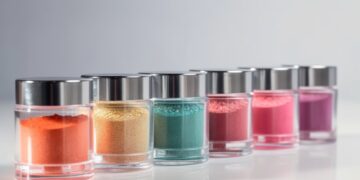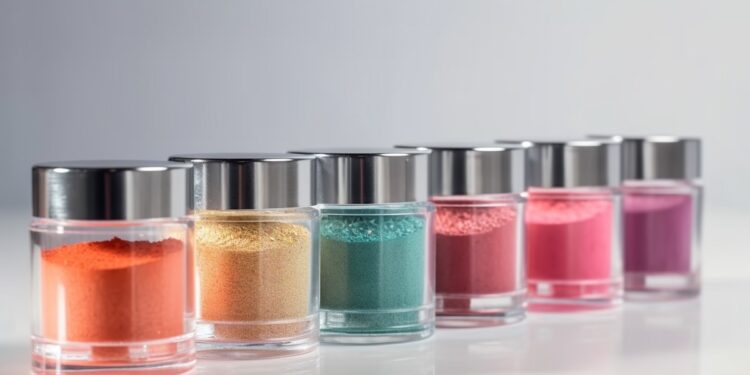Understanding the Origins of Nail Dipping Systems
Nail dipping systems were introduced in the 1990s by Korean nail technicians in New York City. These systems emerged as an improvement over the 1980s silk-wrap trend, substituting acrylic powder for fiber, resulting in stronger nails.
The popularity surged due to its suitability for clients with acrylic monomer allergies and its reduced odor compared to traditional monomers. As described by Lia Smith, OPI Education Manager for NA, these features drove manufacturers to develop official dipping systems.
How Do Nail Dipping Systems Work?
Dipping systems are renowned for their straightforward application style. In brief, the steps include:
Step-by-Step Application Process
- Step 1: Apply a base resin to prepped nails, dip them into powder, and remove excess.
- Step 2: Repeat the resin and powder application 2-3 times to build strength.
- Step 3: Use 1-2 coats of activator and allow the nails to harden.
- Step 4: Once hardened, shape and buff the nails.
- Step 5: Apply two layers of clear topcoat for a glossy finish.
The techniques may vary slightly as some technicians might use activator after each layer, incorporate a clear powder layer, or pour powder to prevent cross-contamination.
The Chemistry Behind Nail Dipping Systems
The effectiveness of nail dipping systems lies in their chemistry:
Basecoat
The basecoat comprises ethyl cyanoacrylate, a common adhesive in many industries, ensuring a tack-free finish upon curing.
Powder
Dip powder, similar to sculpting powders, consists mainly of polyethyl methacrylate beads. These interact with the base resin to form a sturdy coating.
Activator
Primarily made of toluidine/tolylamine, the activator speeds up curing without needing UV light exposure.
Topcoat
The topcoat, akin to the basecoat, provides a clear and smooth finish.
Why Are Nail Dipping Systems So Popular Today?
Dipping systems have gained significant traction, even though they originated decades ago. Unlike UV gel systems, they appeal to clients worried about UV exposure. Furthermore, they offer advantages like:
- Long-lasting, vibrant colors
- Artistic flexibility with color blending
- Minimal odor compared to traditional lacquers
- No tacky residues
- Cost-effective (no UV lamp required)
- Easier nail art application with methods like glitter infusion
Ensuring Safety in Nail Dipping Procedures
As with all beauty products, it’s essential to adhere to safety guidelines:
- Keep products out of children’s reach.
- Avoid skin and eye contact with cyanoacrylates (use water for skin, seek medical attention for eyes).
- Prevent fire hazards, as materials are flammable.
- Follow sanitary practices by using individual powder portions for each client to prevent cross-contamination.
The Future of Nail Dipping Systems
The future of nail dipping lies in the hands of creative nail technicians. With endless possibilities for new art forms and colors, dipping systems will continue to evolve. Consider exploring these systems to bring innovation to your offerings.
Paul Bryson, Ph.D., a principal scientist at Wella-OPI, shares his insights into this transformative technology in the nail industry. Embrace the innovation and artistry that nail dipping systems provide!

























